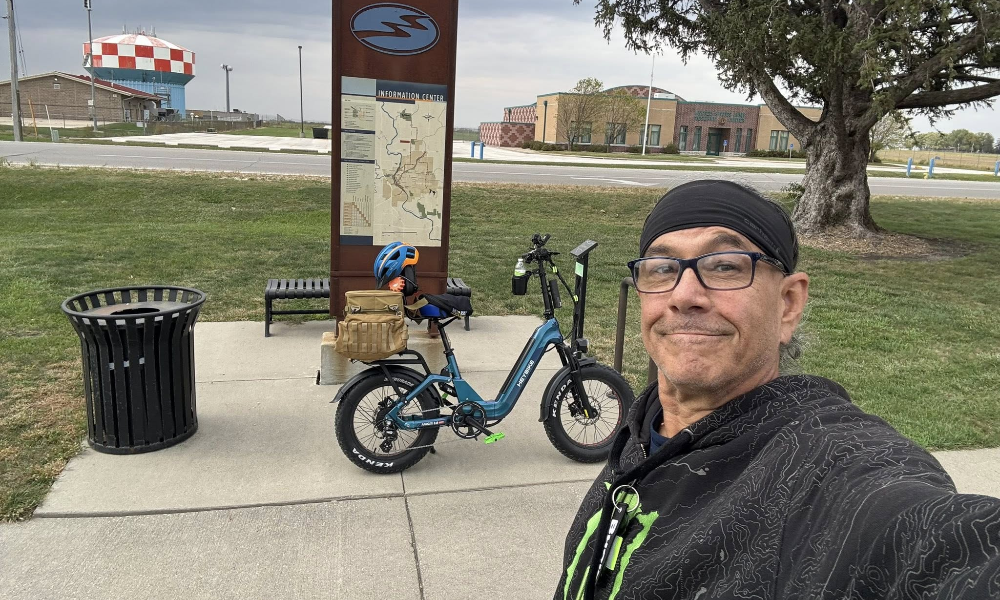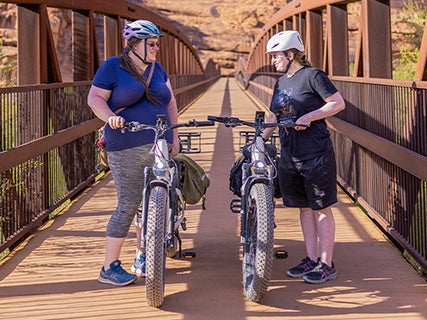For many e-bike users, the arrival of winter spells the end of riding. Or, at the very least, it has a significant drop in ride time. Winter also presents extra hazards to year-round bike riders. Winters are risky for those unfamiliar with riding in frozen winter conditions.
Take more precautions if you intend to store your e-bike throughout the winter. We hope these ideas will help you to stay safe if you ride in the winter, particularly on snow and ice.

Could be Consider Taking a Break
First, if at all possible, avoid riding. The snow is an attractive form of ice and should handle it as such. It is risky to ride in most situations, particularly in cities. The probability of a mishap or collision is decreased in the snow if you are paying attention.
It is safe if the snow is "dry" and has accumulated several inches. Fluffy snow can, but does not always, give a comfortable landing in the event of an accident.
Hidden Dangers in the Snow
Snow also blurs risks such as cracked pavement, frozen subsurfaces, and boulders. There are other hazards, such as you do not want to hit, fall on, or otherwise mess with. If the weather is near freezing, consider walking or driving a four-wheeled vehicle to enjoy the winter. Riding an ebike is not ideal if you are not riding a fat-tire-type e-bike with a helmet.
Storing your e-bike during the winter is not always ideal. You may have to ride your bike to and from work in the snow. If your bike is your only mode of transport, you might get caught in an accident.
If you want to go out and have fun riding in the snow, follow these safety precautions.
Choose The Right Ebike for Winter
Do you wish to buy an electric bike for snow riding? Fat Tire terrain electric bike is ideal for it.
Fat tires with aggressive tread are your best choice for grip and a smooth ride. They protect you from overcoming hidden minor risks in the snow. Many fat tire bikes "float" a little on the snow, where traction is most — at least for snow.
Mid-drive e-bikes often have a torque advantage over hub-drive e-bikes. But e-bikes with "internally geared" hub motors are relatively close in power. Thus either type is tough to go wrong with.
We recommend hydraulic brakes over cable-operated systems. They provide more energy and a better feel and need little to no maintenance or change.
Wear Proper Winter Gear
You should dress for the cold, but your primary focus should be a sturdy helmet. Most riding helmets are adequate but try to wear one that provides as much covering as possible. Try to get full-face biking helmets or even motorcycle helmets. They do not only protect your head and face but can also keep you warm.
Falling while cycling in the snow is far more likely than riding on dry ground. A thin coating of ice can improve the chance of an unpredictable crash. Keep your head up.
While warm gloves are a must if you are riding in the snow. Consider battery-powered heated motorcycle gloves. They are well worth the money and will last many hours on a single charge.
Take Care of Your E-bike Battery
When it is cold outside, it diminishes the capacity of the e-bike battery. As a result, after riding, we recommend withdrawing the rechargeable battery. Store it at room temperature, and insert it back into the e-bike shortly before riding it again. Use a thermal protection case to save the rechargeable battery on longer outings. Always charge Lithium-ion batteries at room temperature.
Safe Braking
In inclement weather, e-bikers should start riding earlier than usual. They should allow for extra travel time than regular. Wet leaves, slush, or loose gravel all impact braking tricks. You can avoid dangerous situations caused by inappropriate braking behavior. For example, use an e-bike equipped with ABS. It improves both the safety of e-bikers and other road users. It also provides more control during braking. Also, it makes riding even in cold city centers safer. Correctly adjusted and well-maintained brakes are necessary.
Store Your E-Bike Properly
Store your e-bike as safely as possible, such as in a closet, attic, or garage, and away from dampness. Before storing your bike, clean and dry it, and lubricate the chain if it has one. Remove the battery if your storage location gets colder than 40 degrees Fahrenheit. Store it somewhere warm but not hot (such as next to a heater).
Conclusion
Winter riding in the snow is a lot of pleasure for us. Yet, there are other factors to consider. Winter riders should take care to avoid the cold. Take precautions, such as wearing thick clothing, helmets, and gloves to avoid colds or frostbite. Wear bright-colored clothing because the fog is thick in the winter. The weather gets darker earlier, resulting in reduced visibility. You must be more cautious than usual while riding. Always consider the road conditions.



Share:
Why Hydraulic Disc Brakes Are the Best Choice for Electric Bikes
Heybike Launches Limited Color Edition Horizon: New Features, New Color, And A New Adventure